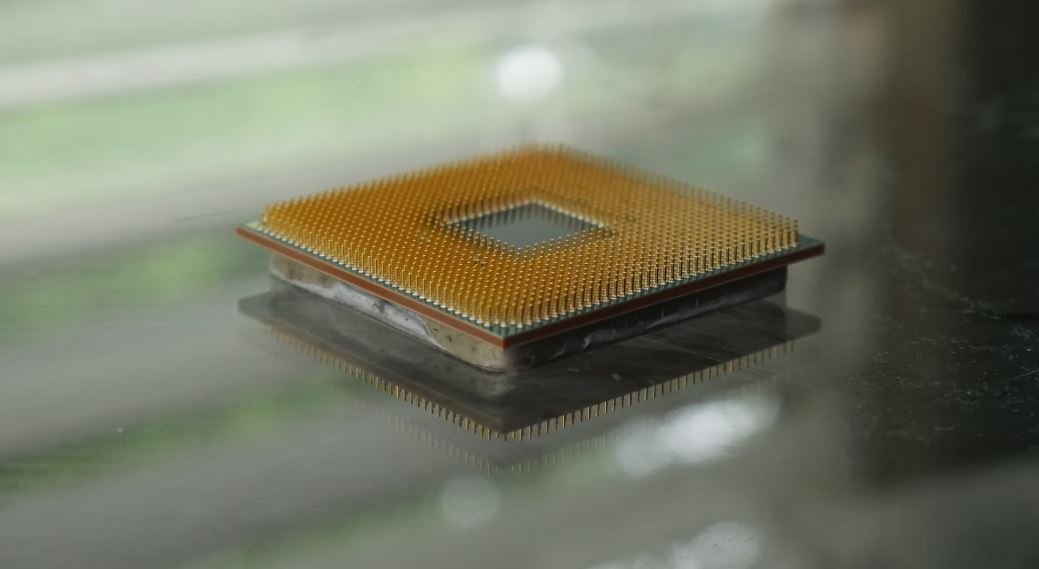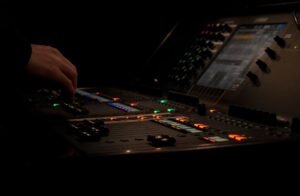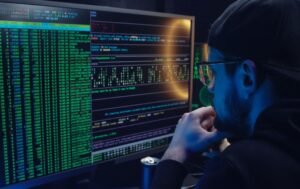Generative Art in Unity
Unity is a powerful game development engine that can also be used to create stunning generative art. Generative art refers to the creation of artwork using algorithms, where the artist sets the rules and the computer generates the image. This provides endless possibilities for unique and organic designs. In this article, we will explore how Unity can be used to create generative art and discuss some key takeaways.
Key Takeaways
- Unity is a versatile game development engine that can also be used for creating generative art.
- Generative art is the creation of artwork using algorithms, resulting in unique and organic designs.
- Unity offers a range of features and tools that enable artists to easily create generative art.
- Generative art created in Unity can be interactive and responsive to user input.
- Generative art can be exported and used in various digital mediums, such as prints, animations, and virtual reality experiences.
Generative art in Unity combines the power of game development with artistic creativity to produce visually stunning and interactive experiences. Artists can utilize Unity’s flexible scripting capabilities to design algorithms that generate artwork, allowing for infinite variations and possibilities. The ability to control parameters and introduce randomization enables artists to create art that evolves over time, offering a dynamic and engaging experience for viewers.
Generative art in Unity blurs the line between artist and programmer, allowing individuals to create art through code.
One of the advantages of using Unity for generative art is the vast library of assets and resources available. Artists can leverage pre-made models, textures, and shaders to enhance their creations or create their own assets from scratch using Unity’s built-in modeling and texturing tools. This comprehensive ecosystem provides artists with a wide range of possibilities and speeds up the development process.
| Unity for Generative Art | |
|---|---|
| Advantages | Disadvantages |
| Powerful scripting capabilities | Steep learning curve for beginners |
| Vast library of assets and resources | Requires familiarity with programming concepts |
| Interactive and responsive artwork | Relatively high hardware requirements for complex projects |
Unity’s extensive library of assets and resources significantly speeds up the development process for generative art.
Another key feature of generative art in Unity is the ability to make the artwork interactive and responsive to user input. Artists can create dynamic systems that react to user actions or input from external devices, such as sensors or microphones. This interactivity adds an extra layer of immersion and engagement, transforming the artwork into an interactive experience that evolves based on user interactions.
- Generative art in Unity offers endless possibilities for unique and organic visual designs.
- Unity provides a vast library of assets and resources to enhance generative art.
- The interactivity of generative art in Unity creates engaging experiences for viewers.
| Generative Art in Unity | |
|---|---|
| Benefits | Uses |
| Endless variations and possibilities | Prints and digital artwork |
| Interactive and responsive experiences | Animations and motion graphics |
| Easily exportable to other mediums | Virtual reality experiences |
Generative art in Unity allows for easy export to various digital mediums, enabling artists to reach a wider audience.
In conclusion, Unity is a powerful tool for creating generative art, merging the worlds of game development and artistic expression. With Unity’s scripting capabilities, vast library of assets, and interactivity features, artists can explore endless possibilities for creating unique and dynamic artwork. Whether it’s prints, animations, or virtual reality experiences, generative art in Unity opens up new avenues for creative expression.

Common Misconceptions
Misconception 1: Generative art in Unity is too complicated
Many people believe that creating generative art in Unity requires advanced programming skills and extensive knowledge of complex algorithms. However, this is not entirely true. While some aspects of generative art in Unity can be challenging, there are various resources and tutorials available that make it accessible to beginners.
- Unity offers a user-friendly interface, making it easier for beginners to get started with generative art.
- There are numerous tutorials and online communities where beginners can learn and seek guidance.
- Basic coding skills are sufficient to create simple and aesthetically appealing generative art in Unity.
Misconception 2: Generative art in Unity lacks creativity or artistic value
Some individuals may perceive generative art in Unity as computer-generated randomness with little artistic substance. However, this misconception overlooks the fact that generative art is a creative process guided by the artist’s intentions and artistic vision.
- Generative art in Unity allows artists to explore unique and intricate patterns that may be difficult to create manually.
- Artists have control over various parameters and algorithms, giving them the ability to design art based on their creative ideas.
- Generative art in Unity enables artists to experiment with unconventional and unpredictable outcomes, leading to innovative and surprising visual results.
Misconception 3: Generative art in Unity lacks originality
Another misconception is that generative art in Unity produces repetitive or derivative artworks. However, this assumption fails to recognize the infinite possibilities and potential for uniqueness that generative art offers.
- Artists can tweak various parameters and aspects of the generative process, resulting in distinct visual outputs.
- Artists can combine multiple generative techniques, creating complex and personalized art styles.
- Generative art in Unity encourages experimentation and exploration, leading to original and unforeseen artistic expressions.
Misconception 4: Generative art in Unity is purely technical
Some people may view generative art in Unity solely as a technical exercise, focusing on the coding aspects rather than the artistic or conceptual elements. However, generative art in Unity encompasses both technical and artistic dimensions, merging the fields of technology and art.
- Generative art in Unity allows artists to seamlessly combine their programming skills with their creativity and artistic sensibilities.
- Artists can infuse their generative artworks with meaning, emotions, and narratives, transcending mere technicality.
- Unity provides a platform that enables artists to bridge the gap between technology and aesthetics, fostering a holistic and multidisciplinary approach.
Misconception 5: Generative art in Unity requires expensive software
There is a misconception that generative art in Unity necessitates the use of costly software or plugins. However, Unity offers a free version that provides sufficient tools and resources to create impressive generative artworks.
- Unity’s free version, Unity Personal, includes all the essential features needed for creating generative art.
- Various free and open-source plugins are available to enhance the generative art creation process in Unity.
- The Unity Asset Store offers a wide range of affordable or free assets and scripts that can be utilized in generative art projects.

Generative Art in Unity: An Overview
Generative art refers to artwork that is created using a predefined set of rules or algorithms, often resulting in unique and evolving designs. In recent years, Unity, a popular game development platform, has gained traction as a powerful tool for creating generative art. This article explores various aspects of generative art in Unity, highlighting fascinating examples and revealing the potential of this creative medium.
Exploring Mathematical Patterns
By leveraging mathematical formulas, generative art in Unity can create mesmerizing patterns. This table showcases different mathematical patterns and the algorithms used to generate them.
| Pattern | Algorithm |
|---|---|
| Mandelbrot Set | Znew = Zold^2 + C |
| Fractal Trees | Recursive branch growth |
| Lissajous Curves | x = A*sin(a*t + δ), y = B*sin(b*t) |
Dynamic Particle Systems
Unity’s physics engine enables the creation of captivating particle systems that respond to various forces. Check out these interactive particle system examples:
| Particle System | Interactive Feature |
|---|---|
| Fire | Realistic combustion behavior |
| Explosion | Force-based impulse effect |
| Smoke | Dynamic wind and turbulence |
Evolutionary Artificial Life
Unity allows developers to simulate complex ecosystems and study emergent behaviors within artificial life simulations. Here are a few intriguing examples:
| Simulation | Emergent Behavior |
|---|---|
| Flocking Birds | Simulated flocking behavior |
| Swarming Ants | Trail-based foraging patterns |
| Schooling Fish | Collective motion and predator avoidance |
Interactive Audiovisual Experiences
Unity’s integration with audio systems allows for the creation of immersive audiovisual experiences. Here are some engaging examples:
| Experience | Interaction Feature |
|---|---|
| Beat-based Visualizations | Visual effects synchronized with music |
| Audio-driven Animation | Dynamic animations influenced by audio input |
| Virtual Reality Soundscapes | 3D audio for realistic immersive environments |
Data-driven Generative Art
By incorporating real-world data, Unity can generate art that represents information in unique ways. Check out these examples:
| Data | Artistic Representation |
|---|---|
| Weather Data | Visualizing temperature fluctuations |
| Twitter Feeds | Dynamic word clouds based on trending topics |
| Astronomical Data | Creating celestial visualizations |
Procedural Terrain Generation
Unity’s terrain engine allows for the procedural generation of vast and realistic landscapes. Take a look at these unique terrains:
| Terrain | Procedural Generation Feature |
|---|---|
| Mountains | Perlin noise-based heightmaps |
| Caves | Randomized cave formations |
| Islands | Voronoi-based archipelago creation |
Artistic Collaboration with AI
Unity’s integration with AI technologies opens up opportunities for collaboration between artists and machine learning. Here are exciting projects combining AI and generative art:
| Project | Collaboration Approach |
|---|---|
| Neural Art Style Transfer | Combining AI-generated styles with artist input |
| GAN-based Creations | Utilizing Generative Adversarial Networks for artistic outputs |
| AI-guided Painting | Using AI to suggest brushstrokes and color palettes |
Immersive Virtual Worlds
Unity’s capabilities extend beyond traditional generative art, allowing the creation of fully immersive virtual worlds. Explore some remarkable virtual environments:
| Environment | Notable Feature |
|---|---|
| Underwater Realm | Realistic underwater lighting and physics |
| Medieval City | Detailed architecture and crowd simulation |
| Futuristic Space Station | Interactive holographic displays and AI-controlled characters |
Conclusion
Generative art in Unity is a fascinating and versatile medium that combines creativity, mathematics, and technology. From mathematical patterns to AI collaborations, Unity empowers artists to bring their visions to life in dynamic and interactive ways. Whether it’s exploring the depths of virtual worlds, simulating emergent behaviors, or creating mesmerizing audiovisual experiences, the possibilities for generative art in Unity are endless. As technology continues to evolve, we can expect even more exciting and innovative applications of Unity in generative art.
Generative Art in Unity – Frequently Asked Questions
What is generative art?
Generative art refers to artwork that is created through the use of algorithms, rules, or other systematic methods. It involves the use of computational processes to generate unique and often unpredictable visual or auditory outputs.
How can I create generative art in Unity?
Unity provides a powerful platform for creating generative art. By utilizing Unity’s scripting capabilities and visual programming tools, you can implement algorithms and rules to generate artistic visuals, animations, and interactive experiences.
What programming languages can I use to create generative art in Unity?
Unity primarily supports programming in C#. You can write C# scripts to define algorithms and rules for generating art in Unity. Additionally, Unity also supports the use of visual scripting tools like Bolt, which allows you to create generative art without writing traditional code.
Are there any specific Unity packages or plugins for generative art?
While there isn’t a dedicated package solely for generative art, there are various Unity packages and plugins that can be used to facilitate generative art creation. Some popular options include Procedural Toolkit, ProBuilder, Shader Graph, and Mesh Effects.
Can I export generative art created in Unity for other platforms or purposes?
Yes, Unity provides options to export your generative art creations to various platforms including PCs, mobile devices, web, and virtual reality headsets. You can publish your generative art as standalone applications, WebGL builds, or integrate them into larger Unity projects.
Is generative art only limited to visuals?
No, generative art can extend beyond just visuals. While visual art is the most common form of generative art, you can also create generative music, procedural level design, and interactive experiences using Unity’s capabilities.
Are there any tutorials or resources available to learn generative art in Unity?
Yes, there are numerous online tutorials, courses, and forums dedicated to teaching generative art techniques in Unity. Websites like Unity Learn, YouTube, and Unity forums have a wealth of resources to help you get started with generative art in Unity.
Can I incorporate generative art into my existing Unity projects?
Absolutely! Unity allows you to integrate generative art techniques into your existing projects seamlessly. You can apply generative art algorithms to create dynamic and visually appealing elements within your game, interactive application, or simulation.
Can generative art be interactive?
Yes, generative art can be interactive. Unity provides features like input handling, physics simulations, animation controllers, and real-time interactions that allow you to create generative art experiences that respond to user input and change over time.
Is generative art considered a form of artificial intelligence?
While generative art often involves the use of algorithms and rules, it is not necessarily classified as artificial intelligence. Generative art focuses on the process of creating artwork through computational means, whereas artificial intelligence typically involves the development of intelligent systems capable of autonomous decision-making.




